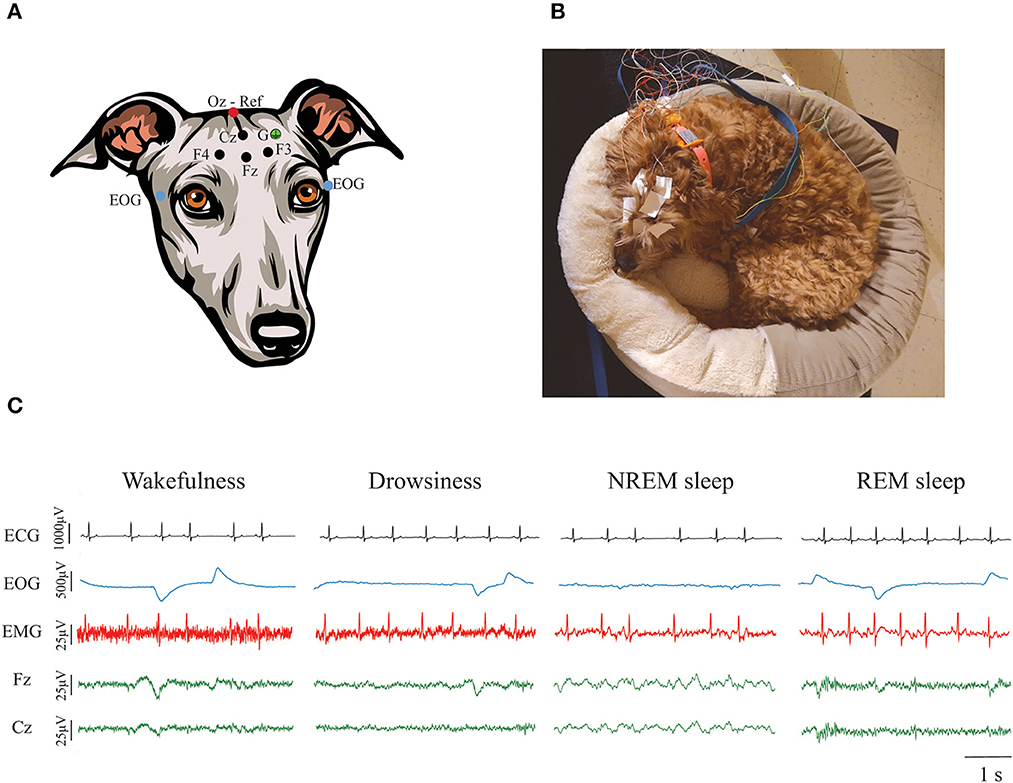2023-04-28 ノースカロライナ州立大学(NCState)
研究チームは、NC州立大学の高齢犬を対象に脳波測定を行い、睡眠中の脳波と認知症の徴候との相関関係を調べた。認知機能が正常な犬と比べ、認知症が進行した犬は、より多くの睡眠障害を経験し、全体的に睡眠時間が短くなることがわかった。
今後、犬の認知症の早期診断や介入に繋がる可能性がある。
<関連情報>
- https://news.ncsu.edu/2023/04/new-study-looks-at-role-of-sleep-disruption-in-dogs-with-dementia/
- https://www.frontiersin.org/articles/10.3389/fvets.2023.1151266/full
老化した犬における睡眠と認知。ポリソムノグラフィーの研究
Sleep and cognition in aging dogs. A polysomnographic study
Alejandra Mondino, Magaly Catanzariti, Diego Martin Mateos, Michael Khan, Claire Ludwig, Anna Kis, Margaret E. Gruen and Natasha J. Olby
Frontiers in Veterinary Science Published:28 April 2023
DOI:https://doi.org/10.3389/fvets.2023.1151266

Introduction: Sleep is fundamental for cognitive homeostasis, especially in senior populations since clearance of amyloid beta (key in the pathophysiology of Alzheimer’s disease) occurs during sleep. Some electroencephalographic characteristics of sleep and wakefulness have been considered a hallmark of dementia. Owners of dogs with canine cognitive dysfunction syndrome (a canine analog to Alzheimer’s disease) report that their dogs suffer from difficulty sleeping. The aim of this study was to quantify age-related changes in the sleep-wakefulness cycle macrostructure and electroencephalographic features in senior dogs and to correlate them with their cognitive performance.
Methods: We performed polysomnographic recordings in 28 senior dogs during a 2 h afternoon nap. Percentage of time spent in wakefulness, drowsiness, NREM, and REM sleep, as well as latency to the three sleep states were calculated. Spectral power, coherence, and Lempel Ziv Complexity of the brain oscillations were estimated. Finally, cognitive performance was evaluated by means of the Canine Dementia Scale Questionnaire and a battery of cognitive tests. Correlations between age, cognitive performance and sleep-wakefulness cycle macrostructure and electroencephalographic features were calculated.
Results: Dogs with higher dementia scores and with worse performance in a problem-solving task spent less time in NREM and REM sleep. Additionally, quantitative electroencephalographic analyses showed differences in dogs associated with age or cognitive performance, some of them reflecting shallower sleep in more affected dogs.
Discussion: Polysomnographic recordings in dogs can detect sleep-wakefulness cycle changes associated with dementia. Further studies should evaluate polysomnography’s potential clinical use to monitor the progression of canine cognitive dysfunction syndrome.


